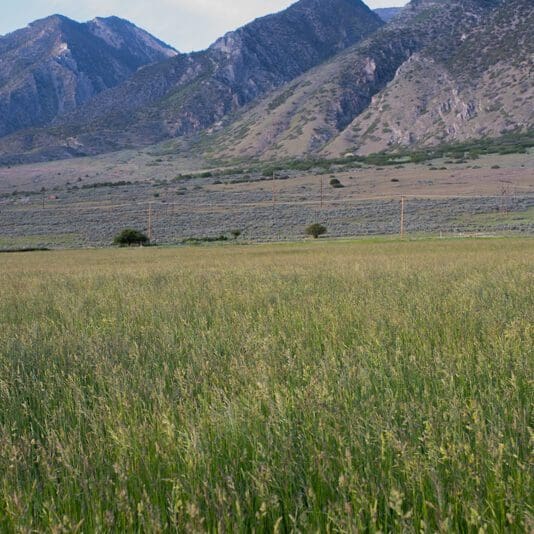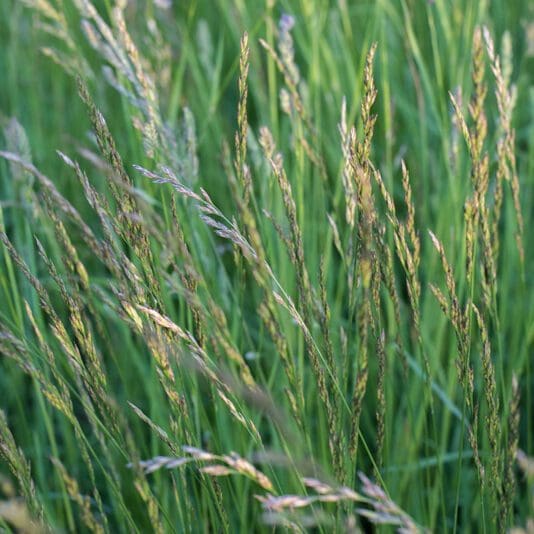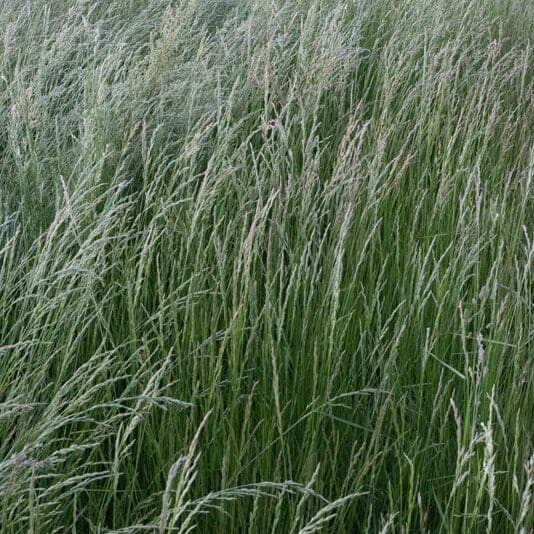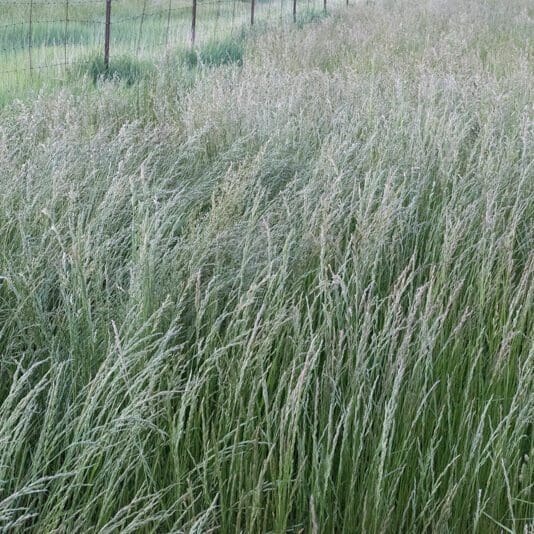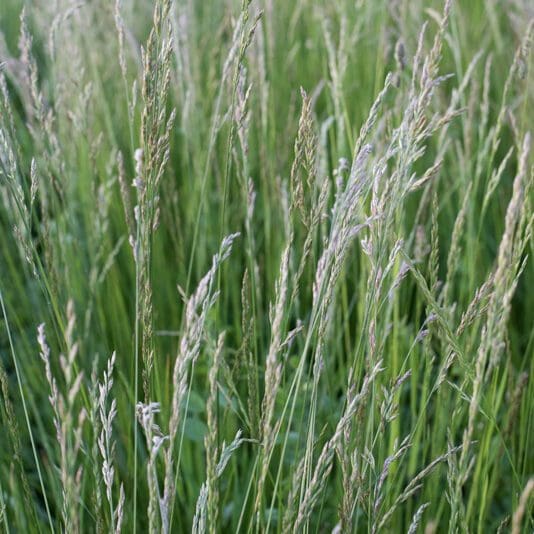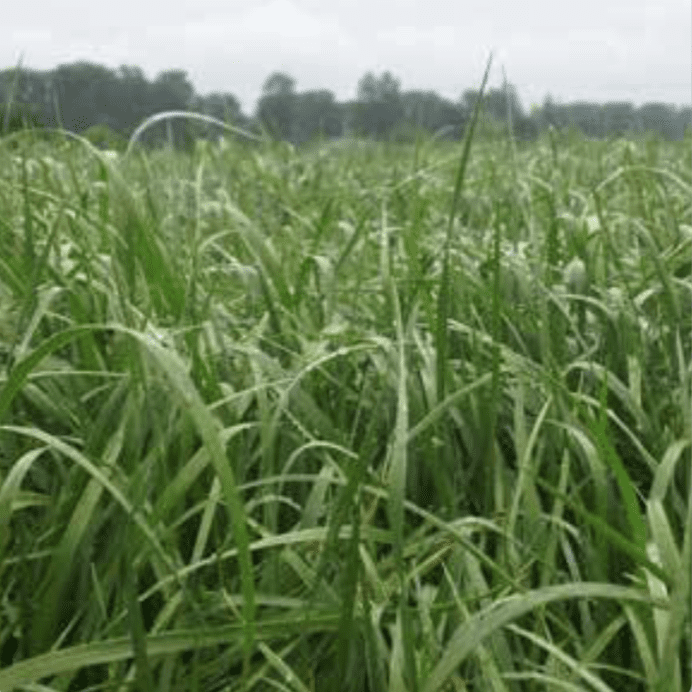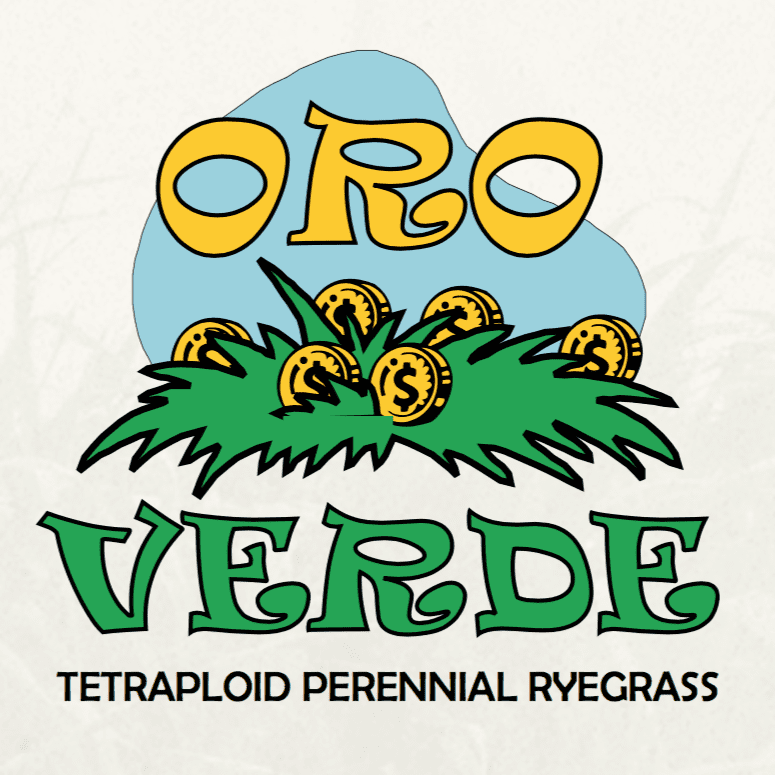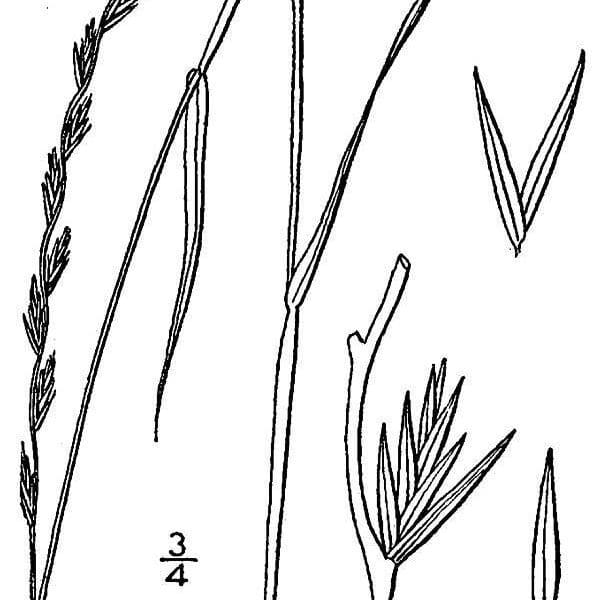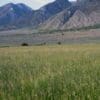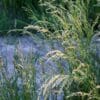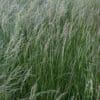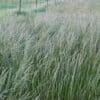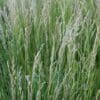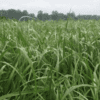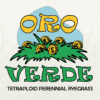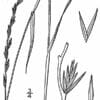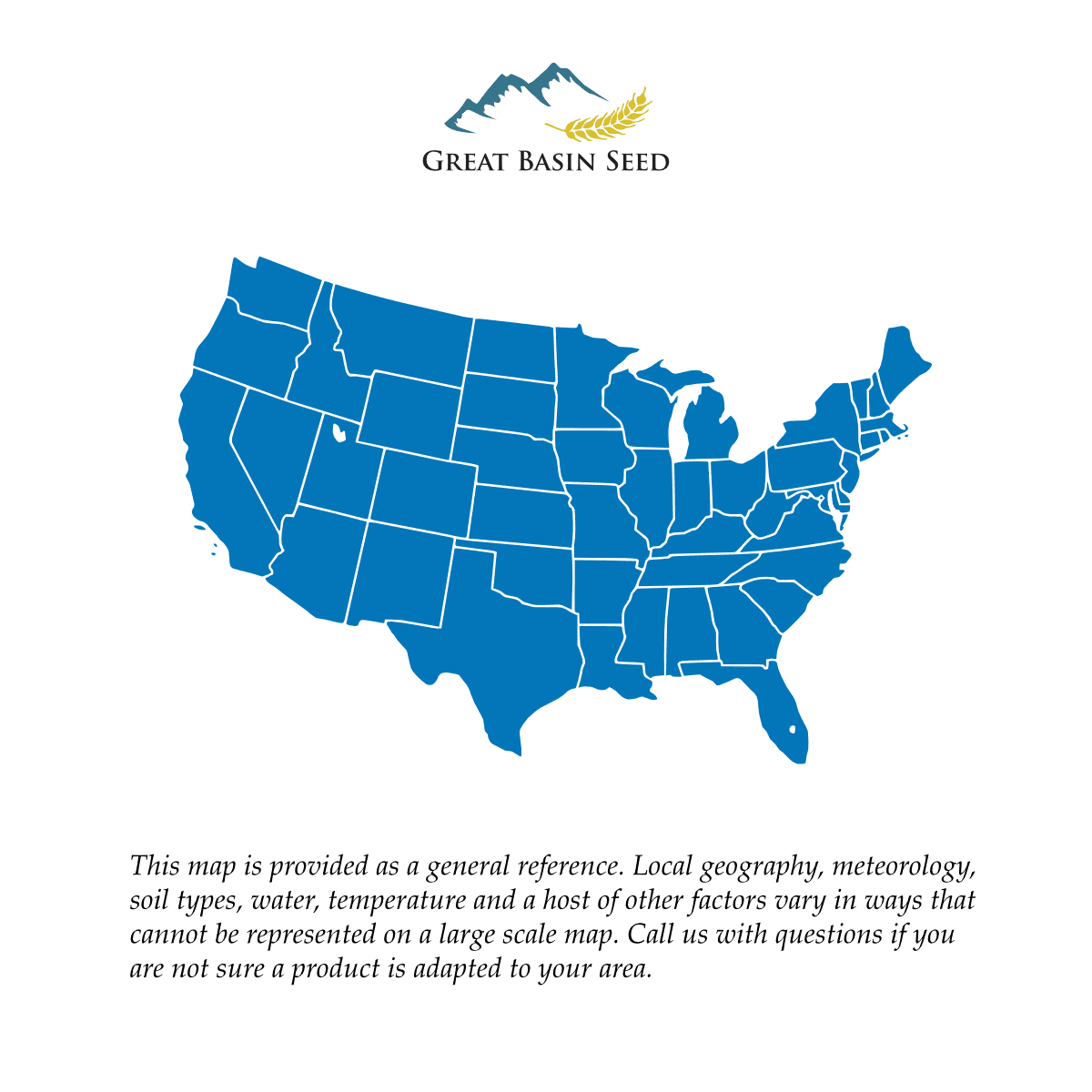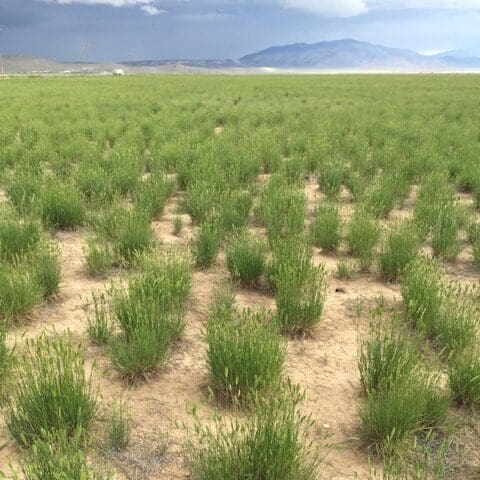Oro Verde Perennial Ryegrass
- Excellent cold tolerance
- Excellent drought tolerance
- Improved persistence and establishes easily
- Produces abundant, highly nutritious forage
- Minimum order quantity is 10 pounds
390 in stock
Min. to Max. Annual Precipitation
36in.
Average Max. Height
Oro Verde Perennial Ryegrass (Lolium perenne) was developed for its tolerance of colder climates and drought conditions. Produces abundant highly nutritious forage, suitable for grazing, silage, hay, and green chop. Can be used for all classes of livestock. Quick to establish and can be used alone or as a component in mixtures. Thrives best on dark rich soils.
Oro Verde Perennial Ryegrass (Lolium perenne) was developed for its tolerance of colder climates and drought conditions. It has shown improved persistence and establishes easily. Oro Verde produces abundant, highly nutritious forage suitable for grazing, silage, hay and green chop. It can be used as a mono-stand or as an excellent component in mixes including other forage grasses and legumes.
Oro Verde perennial ryegrass (Lolium perenne) is suitable for all classes of livestock, especially those with high nutrient requirements such as young, growing animals. It is well suited for both hay and silage. For optimal performance Albion should be cut in the boot stage prior to seed head formation.
Oro Verde perennial ryegrass is quick to establish and can be used alone or as a component in mixtures where it provides rapid cover. The extensive root system of Enhancer makes it an effective catch crop for nitrogen and can help break up compacted soils. It offers many benefits including erosion control, improvement of aggregate stability, and increased organic matter to the soil pro le. It can also be used as a nurse crop with fall- planted legumes such as clover.
Perennial ryegrass grows from 1 to 2 feet tall with a bunchy form. It has medium longevity in mild climates. In northern Intermountain and Rocky Mountain states it tends to be short-lived, often no more than one growing season. Some turfgrass varieties are longer lived. There are numerous long, narrow, stiff leaves near the base of the plant where most of the forage is concentrated.
Perennial ryegrass has a wide range of adaptability to soils, but thrives best on dark rich soils. It will withstand fairly wet soils with reasonably good surface drainage. It will not tolerate standing water for extended periods of time. It grows on soils that have a pH between 5 and 8 with best yields on soils with pH between 6 (slightly acidic) to 7 (neutral).
Perennial ryegrass is a valuable forage and soil stabilization plant. This species is one of the predominant forage grasses in Europe. It has been used in the United States for forage and turf grass.
When grazed or cut for hay it makes excellent feed. It is very nutritious, having similar or higher energy and protein levels than most proven pasture grass alternatives. This is a very important consideration when grass fattening beef cattle or for maintaining high milk production with dairy cows. It is also considered to be a very palatable feed. Preliminary forage quality results from a Montana study indicated good potential for high production of both protein and total digestible nutrients (TDN) per acre, depending on level of inputs and harvest management.
There are several very good reasons to consider perennial ryegrass when planning an irrigated pasture planting. Perennial ryegrass establishes easier and more quickly than some proven long-lived pasture grass varieties. Under ideal conditions, perennial ryegrass is ready to graze within 60 days of planting. When managed correctly, it can be very productive. Perennial ryegrass can also be inter-seeded in existing weak stands of grass with fairly good results. It can be broadcast seeded followed by harrowing, packing or livestock trampling with fairly good establishment results. Perennial ryegrass does best under good, consistent irrigation, so plant only in areas with a good supply of irrigation water.
Annual and Italian ryegrass are similar to perennial ryegrass except they are annual or biennial, depending on climate and/or length of growing season. Italian ryegrass may grow a little taller than perennial ryegrass: from 2 to 3 feet tall. The seed of this sub-species have awns. Generally speaking tetraploid perennial ryegrass varieties are used for forage and diploid varieties are used for turfgrass (lawn) and conservation plantings.
***click the “Additional Information” tab for more seed facts.
| Seeding Rate as a stand alone item (per acre) | 30-40 lbs. |
| Seeding Rate in a Mix (per acre) | 10-30 lbs. |
| Seeding Depth | 1/8 - 1/2 in |
| Days to Germinate | 7-14 |
| Average Seeds per lb. | 242,000 |
| Ease of Establishment | Excellent |
| Life Cycle | Perennial |
| Forage Yield | Excellent |
| Forage Quality | Excellent |
| Maturity | Late |
| Persistence | Excellent |
| Palatability | Excellent |
| Growth Habit | Bunch |
| Drought Tolerance | Good |
| Moisture Tolerance | Good |
| Hay | Excellent |
| Silage | Excellent |
| Pasture | Excellent |
| Growth | Spring-Fall |
Helpful Links
Additional information about this product can be found on the academic websites linked below.
Synonyms
Many plants have more than one common and scientific name. We've listed a few of them below.
- Oro Verde Perennial Ryegrass
- Lolium perenne
Quick Plant Facts
| Common Name: | Perennial Ryegrass |
|---|---|
| Scientific Name: | |
| Plant Type: | |
| Origin: | |
| Seed Count | 247,000 |
| Lifespan: | |
| Growth Season: | |
| Min. Precipitation | 12-16 Inches Minimum |
| Best Sowing Time | Fall, Spring |
| Sowing Rate | 4-8 PLS lbs. per Acre |
| Max Sowing Depth: | |
| Growth Height: | |
| Root Form: | |
| Sun & Shade Tolerance: | Full Sun, Shade Intolerant |
| Elevation of Occurance: | |
| pH Tolerance: |

